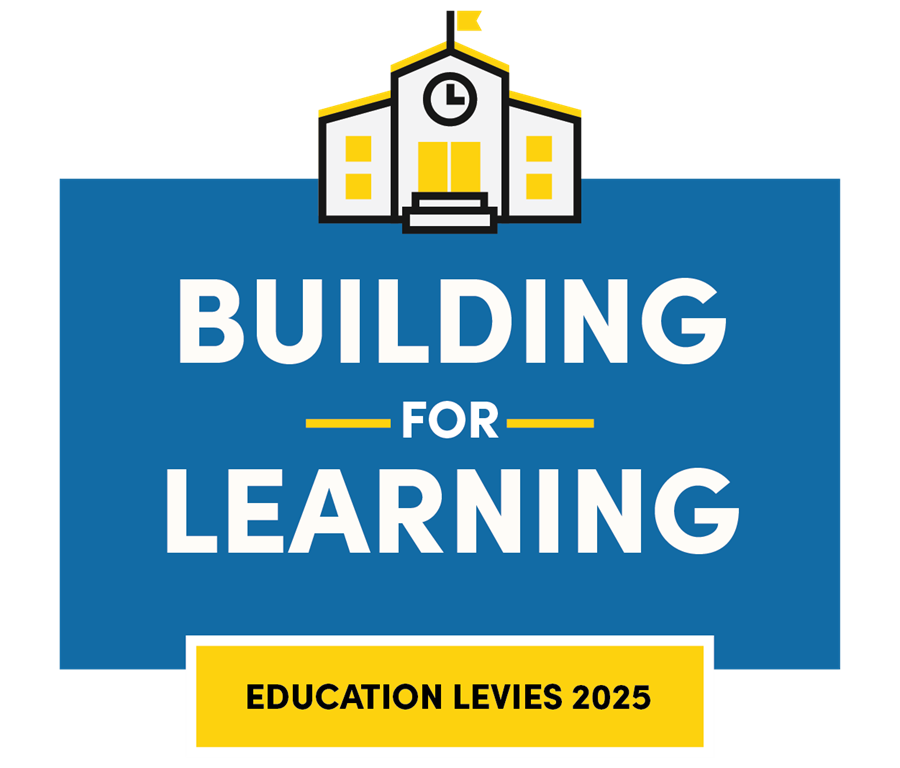BEX VI Capital Levy
Building Excellence VI Capital Levy

BEX VI Placed on February Ballot
At their meeting on Tuesday, Nov. 19, 2024, the Seattle School Board accepted the recommended Building Excellence VI Capital Levy (BEX VI) to be on the February 11, 2025 ballot.
Important Funding Source for Buildings and Technology
Each voter-approved capital levy continues our investment in school buildings and student technology.
These levies supply the main funding for school building improvements and upgrades and 90% of the funding for SPS’s technology operations including projects, equipment, maintenance, and staffing.



BEX VI Levy Overview
- Proposed Levy Amount: $1.8 billion
- Capital Projects Funding: $1,385,022,403
- Technology Funding: $$414,977,597
- Estimated Levy Rates: 93 cents to 79 cents per $1,000 of assessed property value
- Levy Collected: 2026-2031
- Replaces: BEX V Capital Levy (expires 2025; 2024 rate $0.78 per $1,000)
- Election Date: Feb. 11, 2025
While the district currently faces challenges in the annual operating budget, capital levy funds are separate and must be used for the building projects and technology priorities approved in the levy.
Frequently Asked Questions (FAQ)
Top Questions
Why are you not naming the elementary school that is included in the levy?
SPS’s well-resourced schools initiative was underway during levy planning. When the School Board approved the Building Excellence (BEX) capital levy package for the ballot, it wasn’t clear which schools would remain open once a School Board decision was made. The decision to not close any schools in the 2025-26 school year was made after the levy proposal was approved for the ballot. That is why the levy does not name the specific school for replacement.
How will you determine which school is going to be rebuilt?
There are a number of aging elementary schools in northeast Seattle. If the levy is approved, we will undergo a review of those schools and make a recommendation to the School Board. Considerations will include Board Policy, Board Guiding Principles, currently available and long-term capacity needs (for example, the City of Seattle’s proposed Comprehensive Plan notes the desire to construct 300,000 housing units within the existing city boundaries within the next 20 year to address housing issues), Facilities Condition and Safety and Security.
The design work for the replacement school would begin in 2027, and construction would begin in 2029.
How big would the to-be-determined elementary school be?
Because the school has not been identified, it is listed in the levy project list as a 650-student school. That does not mean it would be built to that size. Many of our elementary schools are built for 500 students. Some are built for 500 students with an expansion plan if an additional wing needs to be added in the future due to increasing enrollment.
Seattle Public Schools builds elementary schools based on elementary education specifications developed to provide optimal learning environments that include spaces for 3 or 4 classrooms per grade level, shared learning spaces for each grade level, special education classrooms for specific needs, pull out learning spaces for specialized learning, library/media centers, rooms for art and music, space for preschool classrooms, as well as gymnasiums, lunchrooms, and administration space.
SPS is building schools to serve students now and for the next 50 years or longer. Enrollment increases and decreases over time. These schools have zoning for heating and ventilation that allows spaces to be closed off when not needed but can quickly be brought online when enrollment increases. Having flexible spaces inside the school building means better safety and security than the old solution of using portable classrooms to manage enrollment changes.
See below for more questions and answers.
If you have questions or comments on the BEX VI Capital Levy or any other capital levy, please use our Let’s Talk online form.
Report on Recent Levies
Learn how previously approved levies have been used to improve Seattle school buildings.
This report will be updated in January to include 2024 information and Technology.
Proposed BEX VI Capital Funding
The total for proposed Capital Projects Funding is $1,385,022,403.
Major Renovation and Replacement Projects

- Aki Kurose Middle School addition and modernization: $225,210,400
- Replacement of one aging elementary school in northeast Seattle: $150,000,000
- Lowell Elementary School addition and modernization: $148,333,800
- John Marshall School Interim Site modernization: $84,978,637
- Chief Sealth International High School Career and Technical Education (CTE) and classroom addition: $50,097,300
Building Systems Repairs and Replacements

- Intercom Systems (emergency notifications): $52,750,000
- Security Systems: $50,700,000
- Roofs: $34,888,707
- Heating, Ventilation, and Air Conditioning (HVAC): $22,000,000
- Exterior Cladding: $11,527,535
- Seismic Improvements: $8,678,342
- Exterior Windows: $8,000,000
- Site Improvements: $7,273,460
- Fire Alarm Systems: $2,591,187
- Playground Equipment: $2,335,000
- Lighting: included with Clean Buildings Performance Standards Compliance
Other Projects

- Clean Building Performance Standard Compliance: $92,854,739
- Central Kitchen Improvements: $10,470,000
- BEX V Furniture, Fixtures, and Equipment (FF&E): $8,634,440
- Rainier Beach High School Performing Arts Center Interior Build-Out: $8,608,142
- Cafeteria Refresh: $4,255,138
- Security Entry Vestibule Improvements: $4,250,000
- Gender Inclusive Restrooms: $2,645,105
- Nathan Hale Parking Lot (Thornton Creek Flood Mitigation): $2,000,000
- ADA Improvements: $1,000,000
- Elevator Repairs: $1,000,000
Academic and Athletics Projects
- Athletic Fields/Field Exterior Lights: $22,219,560
- Athletic Equipment: $2,127,000
- Program Placement: $1,000,000
- Special Education Program Modifications: $1,000,000
- Early Learning Capacity: $300,000
Reoccurring Costs
- Major Preventative Maintenance (3 years): $52,500,000
- Property Acquisition and Infrastructure: $10,000,000
- BTA VI Levy Planning and Move Costs: $9,980,000
- Short and Intermediate Capacity/Portable Management: $4,000,000
- Building and Site Security Equipment (Fencing): $2,500,000
- Maintenance Equipment: $1,000,000
- Food Service Equipment: $1,000,000
- Grounds Equipment: $250,000
Programmatic Needs
- BEX VI Projects Cost Escalation 5% Annually: $207,947,591
- BEX VI Building Program Contingency 3%: $37,549,759
- Management and Staffing: $36,000,000



BEX VI Technology Funding

The total proposed for Technology Funding is $414,977,597.
Each capital levy funds SPS technology operations on a 3-year cycle and supports projects, equipment, maintenance, and staffing.
Main Funding Source
BEX VI would provide 90% of Department of Technology Services budget for the next three years.
- 139.3 FTE supporting schools, students, and district operations
- Investments in software and hardware
- Development and implementation of digital curriculum
- Upgrades to business and security systems
- Equitable access to digital resources and language support solutions
Areas of Funding
Student Learning and Support
This category prioritizes the maintenance, enhancement, and expansion of technology resources for students, staff, and classrooms, including technical support for equipment repairs, digital learning facilitation, procurement of instructional software and licenses, and provisioning of student devices to support school improvement initiatives and special education needs.
Infrastructure and Security
Focuses on sustaining and modernizing the district’s data center, cloud infrastructure, internet, and wireless connectivity, while strengthening cybersecurity measures, with funding allocated for system operations, equipment replacement programs, and IT personnel support.
District Systems and Data
Aims to advance districtwide academic and business systems, promote digital transformation, enhance data-informed decision-making, and support critical projects such as the replacement of aging business systems and improving academic digital resources, while providing resources for licensing, staff augmentation, and system application support.
BEX VI Rate and Collection Amounts
Estimated Levy Rates
- 93 cents per $1,000 of assessed value in 2026
- 90 cents per $1,000 of assessed value in 2027
- 87 cents per $1,000 of assessed value in 2028
- 84 cents per $1,000 of assessed value in 2029
- 81 cents per $1,000 of assessed value in 2030
- 79 cents per $1,000 of assessed value in 2031
Collection Amounts
BEX VI Funded Projects by School and Building
If the BEX VI Capital Levy is approved by voters, a work plan will be submitted to the Seattle School Board. These projects have been identified to be included in the work plan.

